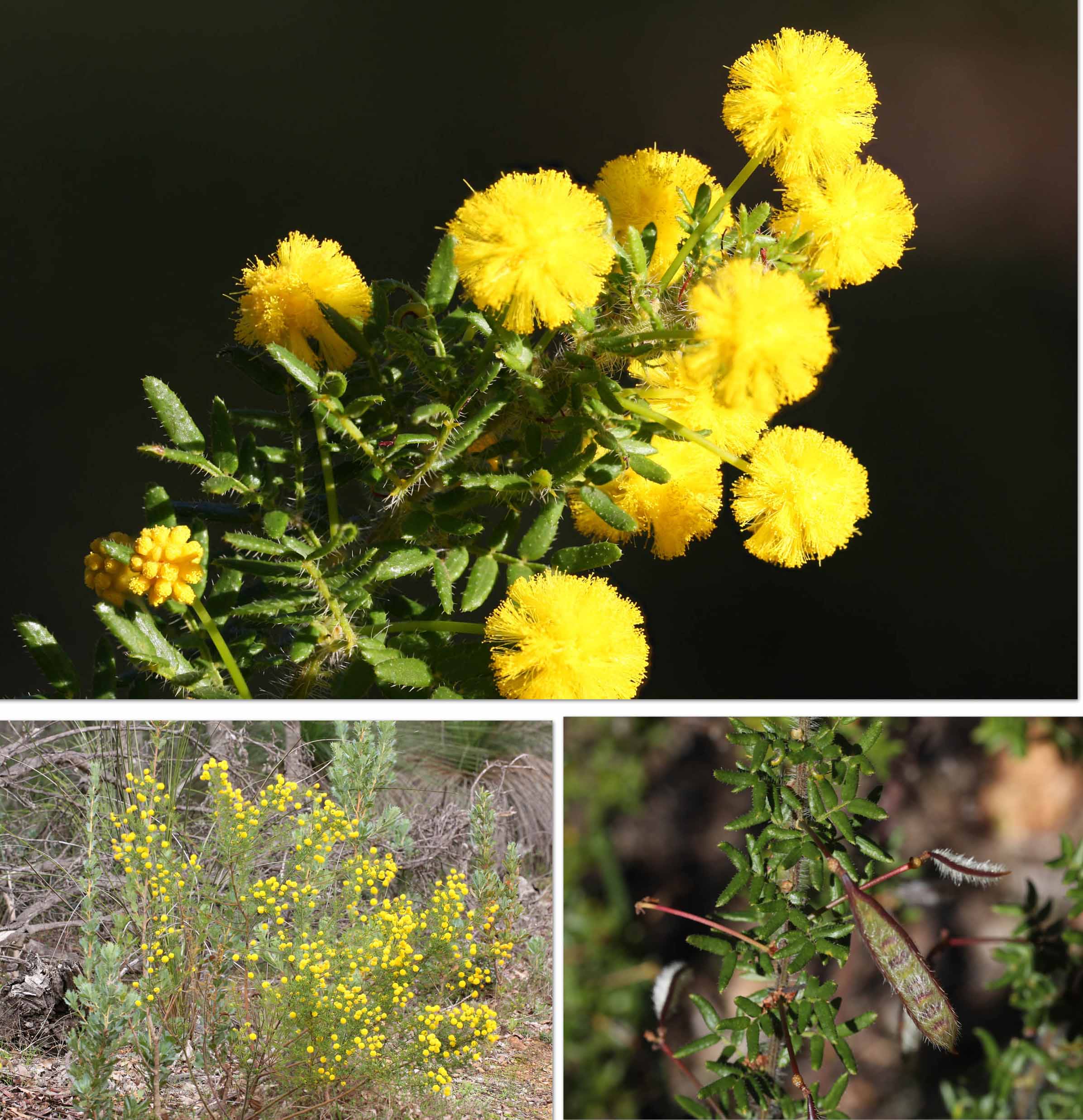Botanical Family: Fabaceae
Botanical Genus: Acacia
Previous Genus:
Botanical Species: lateriticola
Previous Species:
Common Name:
Flower Colour: yellow
Flowering Time: May-Oct
Dieback Resistant: yes
Native to Roleystone/Karragullen: yes
Native to area within 5 km of Roleystone/Karragullen: yes
Category: Shrub - medium, Shrub - small
Found in Reserves:
Araluen Botanic Park, Attunga, Banyowla Regional Park, Bettenay, Canning Mills, Colquhoun , Hall Rd Bushland, Hellenic, Korung National Park, Lina Hart, Midgegooroo N. Park, Peet Road, Quenda, Roley Pool, Stonegate, Warwick Savage, Windsor, Winstanley
Comments:
Acacia lateriticola is an erect, spreading shrub 0.5-1 m high with hairy branchlets. The leaves are bipinnate (divided) with 1-3 pairs of pinnae (segments) 2 to 20 mm long, each with 1-5 pairs of pinnules (leaflets) 4-15 mm long and 1.5-3 mm wide. The pinnules are dark green and shiny on top and paler below with scattered stiff hairs. The flower heads are globular, 7-10 mm across on hairless stalks 15-30 mm long (cf. A. drewiana which has hairy stalks). There are 24-36 flowers per head; each individual flower has five petals and sepals. The pods are flat, 30-50 mm long x 5-10 mm wide and have thickened margins; they may be hairy. The seeds are transverse or oblique to the pod. Occurs on lateritic soils

Photo by Lee Hassan